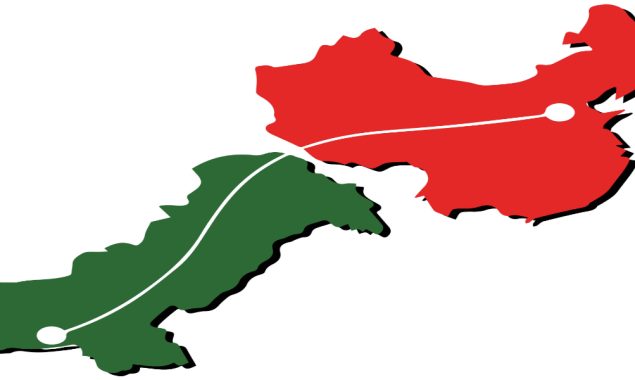
Economics and politics are inter-twined, the quicker any nation recognised this reality, the better placed it is for growth and development. For any nation state to be successful, the basic human needs and necessities of its populace have to be satisfied, first and foremost. The People’s Republic of China has achieved this enormous task. Having done so, China embarked on a journey of economic development. From being a closed Communist state for over three decades, it initiated in the late 70s, several economic reforms that led to the opening of the country for overseas trade, commerce, and investment. The rest is history. And for the countries like Pakistan, there is so much to learn from the Chinese economic miracle.
The People’s Republic of China gained full independence on October 1, 1949. Pakistan was one of the first countries to extend recognition to the Communist China. Pakistan itself as a nascent state was then struggling to help itself free from the headwinds of the cold war that had begun immediately after the World War II. In the first phase, Pakistan’s foreign policy and alliances were guided by its own security considerations; these initiatives for securing itself led to its joining SEATO and CENTO organisations. This was done much to the chagrin of Moscow. Meanwhile, Beijing took a softer stance to this association.
At the Bandung Conference in 1955, Zhou Enlai stuck cordial relationship with the Pakistani delegation, led by Prime Minister Mohammad Ali of Bogra. Since then, the friendship between the two states has grown from strength to strength.
In early 1971, Pakistan facilitated the surreptitious visit of Henry Kissinger to China that paved the way for the detente and establishment of diplomatic relationship between China and the US. As a gesture of acknowledgment, Premier Zhou Enlai is reported to have remarked to Henry Kissinger that a bridge used, (i.e., Pakistan) does not mean, it has become insignificant. Further, China, against the tide of international opinion, maintained a very sympathetic attitude towards Pakistan during the 1971 conflict with India, over the secession of East Pakistan (now Bangladesh).
With the opening of the Chinese economy in 1978, the country hasn’t had time to look back. It has tremendously grown its economy and in less than 40 years, it presents before all, a formidable success. China for more than four decades followed a consistent economic policy of encouraging free enterprise and investments into the country. The policy has been matched against their historical conducive Confucian culture that encourages frugality, hard work, and an enhanced sense of respect for efficiency and productivity.
Consequent to these initiatives, China today boasts of foreign exchange reserves exceeding $3.25 trillion and trade volume/value of $4.6 trillion. The institution of entrepreneurial behaviour along the eastern coastline has brought about the establishment of new industries, many of which create an exportable surplus, giving China a favourable trade balance of $535.01 billion.
Within Asia, which houses more than two-thirds of the world population, China stands out, with a dominant role in the regional peace, politics, and economy. It is likely to become even more dynamic in the forthcoming years, as China continues to make itself competitive through continuous economic and legal reforms. China is and will remain the region’s engine for growth.
The China-Pakistan Economic Corridor (CPEC) did not happen overnight. It has been on the drawing board of the Chinese political and economic ambitions for well over four decades. For the first time in the early part of the decade of the 90s, China held at Beijing its first-ever China-Africa Summit, where the participants, besides the policymakers, think tanks representatives, all the ambassadors of China to the African continent were present. They decided to engage Africa on a wholesome basis.
The China-Pakistan Economic Corridor was; however, launched much later in 2015, where it also became part of the grandiose One Belt, One Road project (OBOR) and plan. So, almost after 30 years, CPEC and OBOR, are part and parcel of the coordinated effort.
China’s vital interest of ensuring supplies of oil also gets satisfied with the availability of the deep-sea Gwadar Port. The cost of supplying the goods from the eastern coastal areas and the time of shipment, both are significantly lowered. That’s China’s major advantage. Already China has significant business interests in the Middle East and Africa. Otherwise too, Chinese corporations are heavily engaged in the building of roads, bridges, railways, and other infrastructure projects in the Sub-Saharan and West Africa.
As a nation, we have touted much about CPEC being a catalyst in the economic development. Liberally, CPEC is referred to as a “game-changer” for Pakistan. It indeed can be. But for such benefits to be derived, there is a need to focus attention on developing our own objectives for what advantage, we aim to achieve. In the absence of clarity, the game would change only for China. Along the route, there is a potential to develop and house industries that will give exportable surplus, which can be shipped via the corridor. The element of ensuring that there is an adequate transfer of technology is a critical aspect. Pakistan has to learn from the Chinese economic miracle, especially the use of Special Economic Zones (SEZs), along the route. Technological convergence and advanced production techniques with the evolution in human capital will give a surge to innovation and productivity.
Since the decade of 80s, all the newly industrialised countries of Northeast and Southeast Asia have proved beyond doubt that exports are the engine of growth for any economy to transition from a developing one into a developed one. South Korea, Taiwan, Thailand, Hong Kong, Malaysia, and the People’s Republic of China are the case in point. The available literature remarkably evidences the role of SEZs in productivity and export-led growth.
Additionally, SEZs provide employment opportunities that fuel growth through urbanisation, skill enhancement, technological transformation, FDI’s, and educational achievements (Shenzhen, an SEZ on the borders of Hong Kong is a classic case of the success of SEZ in economic development).
Pakistan can gain from China’s significant success in the operations of the special economic zones. Initially, in the period 1980-1985, China set up four special economic zones, i.e., Shenzhen, Shantou, Xiamen, Zhuhai, and further opened up 13 coastal cities. These economic zones over time have undergone steady growth, achieved great successes, and have accumulated vast experience of their pioneering and exploratory work. From this rich experience, Pakistan has much to learn and must replicate the Chinese strategy for its special economic zones along the route.
The SEZs on the corridor must be planned to develop readily available resources that go towards aiding industrial output, which will be exportable to potential markets of the Middle East, Central Asian Republics, and Africa. The policies must be designed to keep the element of cost-effective transportation that is backed by the availability of cheap labour and other inputs for attracting fresh domestic and international capital and investment. SEZs provide multidimensional benefits to the economy. Pakistan must take a blueprint of the Chinese economic modelling of the SEZ and simply replicate it, with minor adjustments and tweaking to suit the local and current circumstances. The planned nine special economic zones must be marketed globally, with particular emphasis on the investors from the Middle East.
Pakistan, in the context of availing the full advantage of CPEC, must place reliance on its strengths; like funding those goods and services that will help it achieve higher export growth. Such exercise will lead to identifying the national industry. Once these sectors are fully identified it must make a pitch to the international investors with sound infrastructure facilities and necessary tax holidays and breaks.
Pakistan, with the Chinese participation, must make heavy investments into research and development (R&D) efforts to bring to the exportable status new products. Pakistan regrettably has a low culture of R&D; its necessary boost must remain a priority.
Along the route, the government through the necessary framework of laws must encourage the building of warehouses, cold storage factories, gas stations, and even more importantly the most sophisticated management system for handling the containerised cargo. We can seek help from China and Hong Kong, or even Singapore. The attention to the growth of the rural economy arising out of CPEC cannot be underscored. Several micro-projects, as periphery to major industries, must emerge to create a positive social, cultural, and economic impact.
CPEC admittedly can be the harbinger of great economic success for Pakistan. It has all the potential to be truly a game-changer. The Chinese apparently are extremely clear of what they wish to achieve from CPEC; it is, unfortunately, Pakistan that seems ill-prepared to take full advantage of the corridor; where its lands will be used for economic growth of the neighbours and not to the landowner, if there is a failure to get the act together. Prime Minister Imran Khan must go beyond the rhetoric of “Iron brothers” and, “higher than the Himalayas”, during this visit and negotiate for more investment and capital transfer. Economic relations must run parallel with the political friendship.
CPEC is a route of promise for Pakistan, China, and the region. It will play a significant role in binding the countries for trade, commerce, and industry. This inevitably and eventually will lead to a better understanding between the nation states and will most likely usher in a better era of peace and pleasant coexistence. To Pakistan, CPEC is an opportunity, which must be taken.
(The writer is a senior banker and a freelance columnist. Views expressed by him are his own and do not reflect the newspaper’s policy)
Read More News On
Catch all the Business News, Breaking News Event and Latest News Updates on The BOL News
Download The BOL News App to get the Daily News Update & Follow us on Google News.




